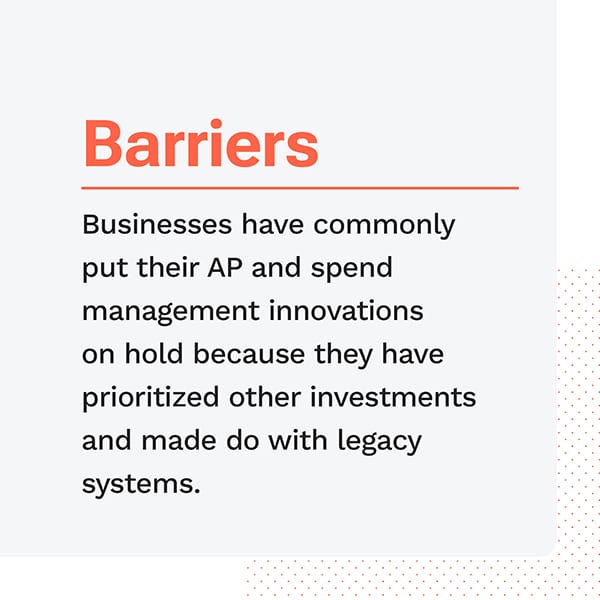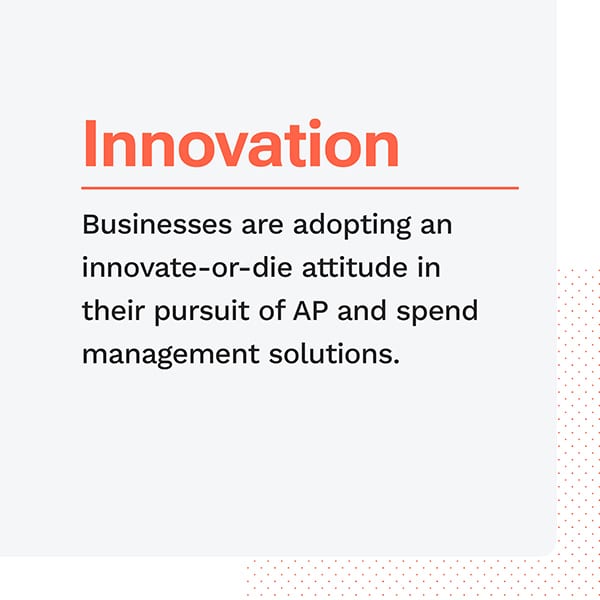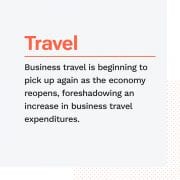Report: Mobile Changes The Game For Managing Remote Worker Spend

 Enterprises of all sizes and sectors are grappling with legacy spend management processes. Not only do many of them rely at least partially on pen, paper and spreadsheets to keep track of who owes what to whom and when, but those that use digital tools often use multiple systems at a time. The result is an endless maze of forms, emails and messages that reduce transparency and make it nearly impossible for them to make informed financial decisions.
Enterprises of all sizes and sectors are grappling with legacy spend management processes. Not only do many of them rely at least partially on pen, paper and spreadsheets to keep track of who owes what to whom and when, but those that use digital tools often use multiple systems at a time. The result is an endless maze of forms, emails and messages that reduce transparency and make it nearly impossible for them to make informed financial decisions.
 There is a better way. There are many technologies available that can help these enterprises streamline their operations, with automation being toward the top of the list. These types of innovations have been available for years, but they are seeing renewed interest as more employees than ever work from home and businesses face an ultimatum: innovate or get left behind. In the inaugural “Corporate Spend Playbook,” PYMNTS examines the shortcomings of siloed spend management systems and the rising need for platform-based spend solutions that can give them a more holistic approach to optimizing their payment operations.
There is a better way. There are many technologies available that can help these enterprises streamline their operations, with automation being toward the top of the list. These types of innovations have been available for years, but they are seeing renewed interest as more employees than ever work from home and businesses face an ultimatum: innovate or get left behind. In the inaugural “Corporate Spend Playbook,” PYMNTS examines the shortcomings of siloed spend management systems and the rising need for platform-based spend solutions that can give them a more holistic approach to optimizing their payment operations.
Around the Spend Management Ecosystem
The past 16 months have made efficient cash flow management more critical than ever. Widespread cash flow shortages and an accelerating transition to a remote and hybrid workforce are putting unprecedented pressure on businesses to ensure that their spend management systems are not only streamlined, but also that they are capable of supporting an increasingly digital-first workforce.
an accelerating transition to a remote and hybrid workforce are putting unprecedented pressure on businesses to ensure that their spend management systems are not only streamlined, but also that they are capable of supporting an increasingly digital-first workforce.
The trouble is that as much as one-third of businesses still use siloed, fragmented spend management and accounts payable (AP) processes that rely on a mix of both digital and paper-based methods. This lack of an integrated system for tracking and managing payments can exacerbate processing times and reduce transparency, making effective cash flow management all but impossible.
There is hope amid this chaos, however. Businesses across the board are beginning to combat these longstanding inefficiencies with innovation. Forty-eight percent of businesses in the United States are already in the process of automating their AP processes to some degree, presenting new opportunities for them to overcome the structural inefficiencies that have bogged them down for years.
For more on these and other stories, visit the Playbook’s News & Trends section.
How Spend Management Automation Powered Formstack’s Digital Transition
The transition to a remote and integrated workforce was a challenge for many businesses, especially when it came to adjusting their spend management systems accordingly. This new  arrangement rendered many firms’ legacy spend management processes unusable. Luckily, there is hope. Automating these workflows can help businesses reduce the time and effort needed to manage their spending, while also freeing their staff up to focus on more pressing matters, according to Matt Gard, vice president of accounting and compliance at Formstack.
arrangement rendered many firms’ legacy spend management processes unusable. Luckily, there is hope. Automating these workflows can help businesses reduce the time and effort needed to manage their spending, while also freeing their staff up to focus on more pressing matters, according to Matt Gard, vice president of accounting and compliance at Formstack.
To learn more about how spend management automation can enhance businesses’ payment flows, visit this Playbook’s Feature Story.
Deep Dive: How Adopting Digital Innovations Can Help Firms Overcome Spend Management Silos
Spend management innovations are growing more popular as businesses eagerly search for new ways to improve upon their legacy processes. Yet many of these innovations overlook or fail to address the fundamental inefficiency of data silos.
This month’s Deep Dive examines how businesses are revamping their spend management processes in the face of a rapidly changing market, and how this innovation fervor might help businesses break free from data silos for good — but only if they invest in the right tools.
About the Playbook
The “Corporate Spend Playbook,” a PYMNTS and Airbase collaboration, examines how spend management automation can help boost payments transparency and facilitate smoother payments operations.
